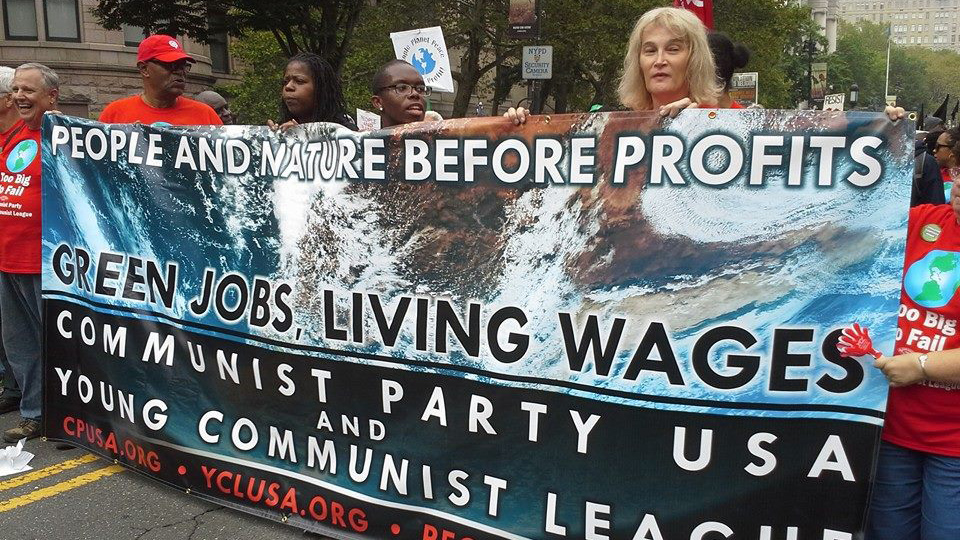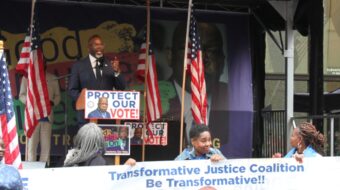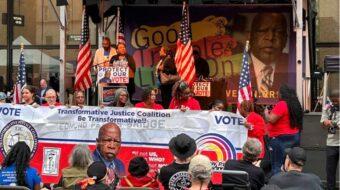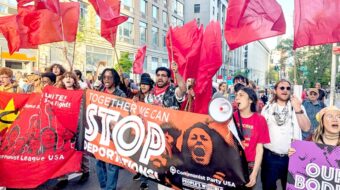
As part of an ongoing series, “Red Century,” the New York Times published an article April 30 by 81year-old liberal social critic Vivian Gornick, entitled “They Were True Believers.” In this piece Gornick, a long time writer for the Village Voice, gives a moving portrayal of the rich and fulfilling life she and so many of her neighbors, family and friends experienced in the Communist Party in the 1930’s, 40’s and 50’s. But she claims the party was destroyed and became a relic of history in 1956 when Nikita Khrushchev denounced Soviet leader Josef Stalin.
As someone who joined the Party much later, in 1970, I beg to differ. I joined the party after five years of activism against the war in Vietnam. Vietnamese communists, were a critical part of the leadership of the movement for national independence and sovereignty in their country. They were hardly deterred by whatever Khrushchev had to say about Stalin.
Neither were the thousands of American Communists who opposed the war, including two of the “Fort Hood Three,” the first American soldiers to refuse deployment to Vietnam.
Nor were the many dynamic leaders that I met in the CPUSA. They had been steeled in the mass struggles to organize industrial unions, overcome Jim Crow racism and build unity against fascism before and during WWII. They had survived the terrible repression targeting the Party during the McCarthy era.
Gornick does not mention this repression officially conducted by the U.S. government, its collaborating employers and propagandists and much of the press including the New York Times. She does not acknowledge in the Times article the anti-Communist hysteria aimed at destroying the labor movement and intimidating all working class, democratic, and progressive forces during the 1950’s. The campaign was especially dangerous because it made acceptable the idea of possible war against the Soviet Union. The damage done by this campaign far exceeded Khrushchev’s speech in weakening the size and influence of the Party.
Gornick also does not mention the many leaders and ordinary members who, after the Khrushchev speech, risked so much, including their reputations and jobs, by continuing their membership in the party.
I had a close friendship and working relationship with one of those leaders, George Meyers, who served 38 months in federal prison because of his Communist beliefs. Upon his release in 1956, he was besieged by reporters who asked him, “George, now that Khrushchev has denounced Stalin, are you going to quit the Communist Party?.”
To this, George replied, “Stalin did not recruit me into the party and nothing he did is going to make me quit!
“I joined the Communist Party because of the class struggle in the United States,” he recalled later in a 1996 interview in the Baltimore Sun. “That’s why I never had any problems with all those foreign ups and downs.”
Meyers had been a prominent labor leader in Maryland and had organized a 10,000-member local of the Textile Workers Union at the Celanese plant in Cumberland where he worked for 22 ½ cents an hour seven days a week.
In the days before Occupational Safety and Health laws the textile fibers in the mill destroyed the lungs of nearly all the workers. Meyers outlived his union brothers and sisters because he got off the shop floor when he was elected president of the local. Later, as president of the Maryland-District of Columbia Congress of Industrial Organizations, he led the drive that organized 37,000 workers at the Glenn L. Martin aircraft plant. He insisted that 7,000 African Americans be integrated into the work force.
During World War II Meyers had waived his deferment as a labor leader and served in the Air Force.
During his 1951 trial under the Smith Act, the trial that resulted in his imprisonment, prosecutors pressed Meyers to name his comrades. He said he could not do that, ”but, I can tell you who recruited me into the Party.”
“Who was that?” they asked, moving closer to the defendant to get this vital piece of information.
“The Celanese Corporation of America!” George declared in his booming voice.
Like many other Communists George went into the South in the early 1960’s, long after the Khrushchev revelations, to help build the civil rights movement. Until his death in 1999, he continued to serve on the party’s national board and as head of its labor department.
In his last major speech before his assassination, delivered at the 1968 Freedomways banquet honoring the great scholar Dr. W. E. B DuBois, who late in life had joined the Party, Dr. Martin Luther King recognized the contributions of the party and denounced “our irrational, obsessive anti-communism.”
In the 1970s, ’80s and ’90s, the party was extremely active in the broad, pioneering effort to revitalize the labor movement and change its cold war, class collaborationist policies and leadership. Led by General Secretary Gus Hall and Chairman Henry Winston, the party, in that same period, was decisive in building the mass movement that saved the life of Angela Davis.
After her trial Davis ran for Vice President on the CPUSA ticket with Hall. The issues the party raised in that campaign and in several previous ones put forward proposals, including ones for massive infrastructure, national healthcare and other programs, that were later adopted by broader progressive organizations in their electoral efforts.
During this period the Party also played a critical role in the movement pressuring the U.S. government to boycott and impose sanctions on apartheid South Africa. These and other activities show that the party’s influence continued past the alleged 1956 collapse that Gornick describes.
Since the beginning of the Trump presidency some 1,000 people have joined the Communist Party. Today the party fights in the immediate term against exploitation, militarism, destruction of the environment and against racism and all forms of oppression. In the long term it fights for a socialist system to replace the current capitalist system,.
Some abandon the party and the movements for opportunistic reasons or even perhaps because they grow tired of expending the energy the fight requires. Some move on because they only ever intended to put in an effort during a period of time or around a set of issues. No problem with that. Many left because of the campaign of terror against the party. And, of course, many stay on for a life-long commitment. There is a place in our party for all these groups excepting of course the ones who left for opportunistic reasons and became public opponents not just of the party but of all progressive politics.
I disagree strongly with Gornick’s contention that 1956 was “the end.” As long as corporate power continues and attacks the living standard of the people the party and the movements will resurface, even when they take a terrible temporary beating.
In large part the New York Times “Red Century” series covers up this fundamental truth. The one thousand who have joined the party this year recognize that truth and we can expect, I think, more and more to join them. As long as the system of exploitation, oppression and war, reckless destruction of the environment and imperialist aggression exists, many will come to realize the underlying capitalist cause and join the Communist Party.
I wish the New York Times will some day print a “Red Century” series that shows how much the communists have contributed to building a peaceful, democratic and more humane country and world. We’d be so much better off if it did. Sadly we are still getting from them signs that they continue their addiction to “irrational, obsessive” cold war propaganda and anti-communism.
For more information on the Communist Party go to: CPUSA.org










